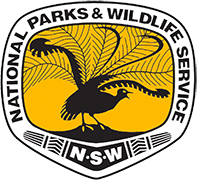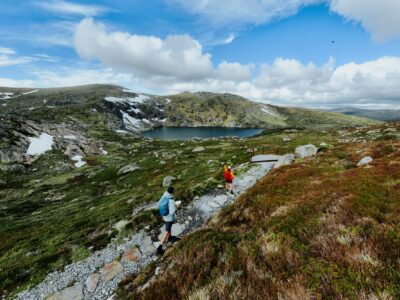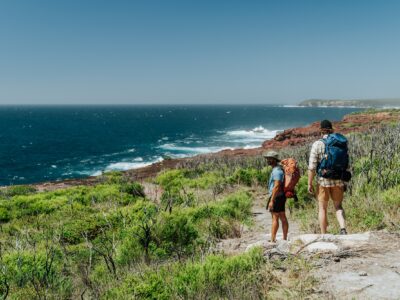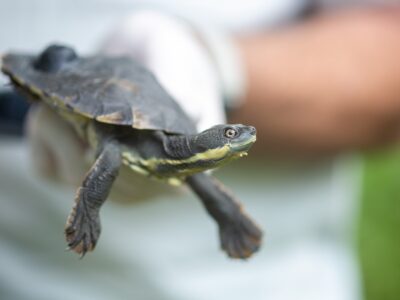Setting off on a road trip to outback NSW, a few things are expected on an iconic Aussie journey. You just know that there’ll be thousands of kilometres of dusty, red earth; bone dry heat; roos everywhere; flat landscapes stretching all the way to the horizon; quirky outback roadhouses where, if stopping in for a cool drink, you’ll probably meet even quirkier characters.
Out at Paroo-Darling National Park, some 12 and a half hours from Sydney, is something you won’t expect: a sight to stop an outback road tripper in their tracks.
In a once-in-a-decade event, usually dry Peery Lake has filled with fresh water, and has become an astonishing oasis over 5000 hectares in size (think roughly 5000 football fields) appearing like a mirage right in the middle of the desert.
-
Where did all this water come from?

Photo InformationFirst time in a decade Peery Lake is filled with water!
Peery Lake
Paroo-Darling National Park
Johlene Shalders (2020)

Photo InformationThere’s water! ?
Peery Lake
Paroo-Darling National Park
Johlene Shalders (2020)

Photo InformationPeery Lake when it was dry
Peery Lake
Paroo-Darling National Park
John Spencer/DPIE
Peery Lake is a ‘terminal wetland’ that has been in severe drought for the last ten years.
The drought-breaking water has come from soaking rainfall in the Warrengo Range catchment in southern Queensland, which flowed on through Cuttaburra Creek and into the lower reaches of the Paroo River. It then took months for this water to move through a complex system of channels, overflow swamps and basins down to north-west NSW before finally reaching Peery Lake. This, along with some help from decent local rainfalls, has filled the lake.
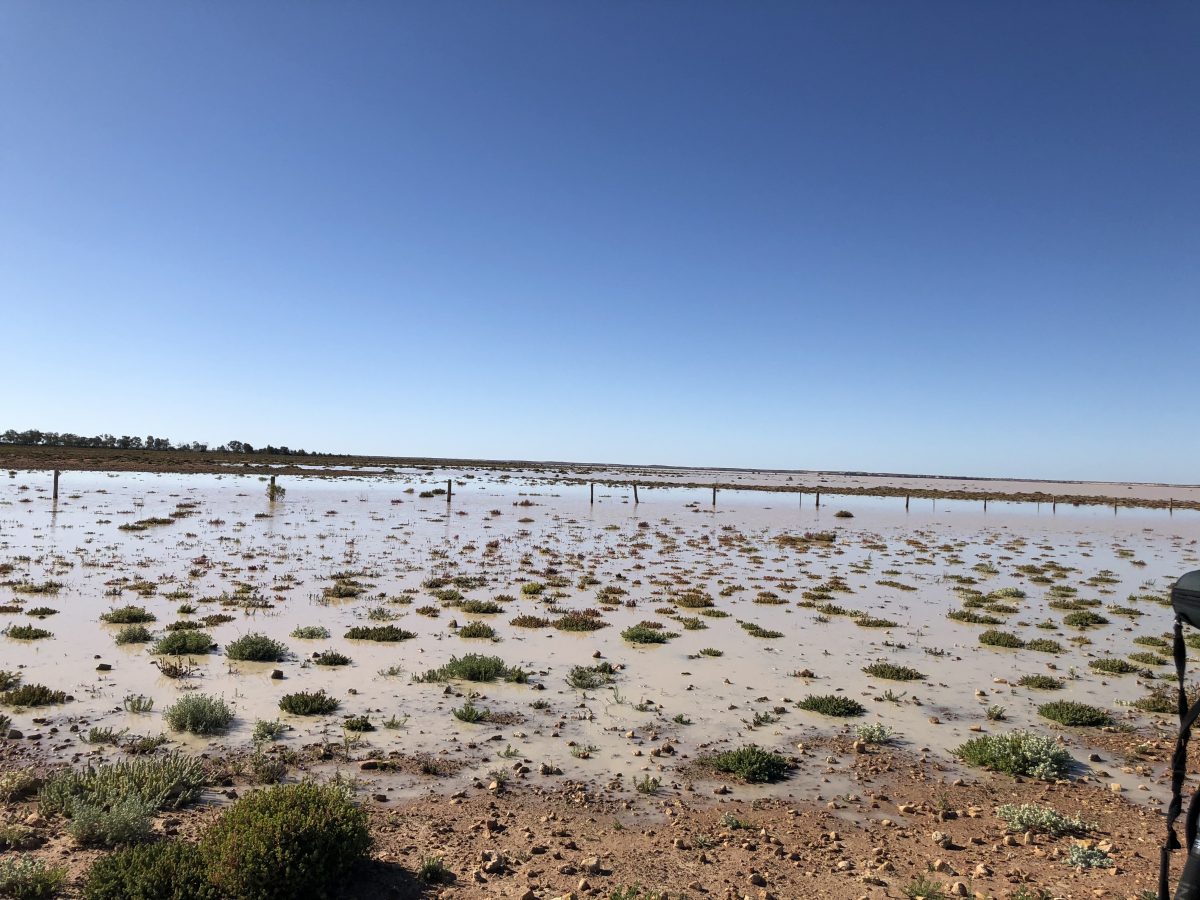 Photo Information
Photo InformationWoohoo! There’s water!!
Peery Lake
Paroo-Darling National Park
Nancy Auerbach (2020)
Luckily this isn’t a ‘there one day, gone the next’ event – the water in Peery Lake is expected to stick around for up to three years before it completely dries up.
Did you know: Wetlands are often linked to each other. A ‘terminal wetland’ is at the bottom of the wetland chain, meaning it fills up from the overflow of other wetlands, but doesn’t usually pass its water on.
-
A who’s who of the waterhole

Photo Information“Ready for my close up”. A kangaroo captured on a monitoring camera.
Peery Lake
Paroo-Darling National Park
Graeme Armstrong/DPIE

Photo InformationBlooming: showy foxtail (Ptilotus exaltatus)
Peery Lake
Paroo-Darling National Park
Nancy Auerbach (2020)

Photo InformationBlooming: pop saltbush (Atriplex spongiosa)
Peery Lake
Paroo-Darling National Park
Nancy Auerbach (2020)

Photo InformationBlooming: senna species
Peery Lake
Paroo-Darling National Park
Nancy Auerbach (2020)
The influx of water at Peery Lake means an absolute breeding boom for the plants, invertebrates, frogs, fish and waterbirds who have flocked to the area.
Head to the lake and you’ll quickly realise that it’s the birds who steal the show though. Up to 40,000 waterbirds in total and 42 species have been recorded at Peery Lake.

Photo InformationWhite-winged Fairy-wren hanging out
Peery Lake
Paroo-Darling National Park
Dirk Hovorka (2020)

Photo InformationGull-billed tern (with a Military Dragon)
Peery Lake
Paroo-Darling National Park
Dirk Hovorka (2020)

Photo InformationEmu male with chicks (Dromaius novaehollandiae )
Paroo-Darling National Park
John Spencer/DPIE
There are resident species who call the wetland home, and then there are the international travellers (migratory species) who head to western NSW in droves, from places as far away as arctic Siberia, such as the sharp-tailed sandpiper who stops in at the lake for its tropical vaycay.
The huge variety of birdlife spotted include the emu, wedge-tailed eagle, brolga, pelican, black swan, pink-eared duck, white-faced blue heron, budgie, bluebonnet parrot, fairy-wren, red-backed kingfisher and the rainbow bee-eater.
-
Welcome to the jungle
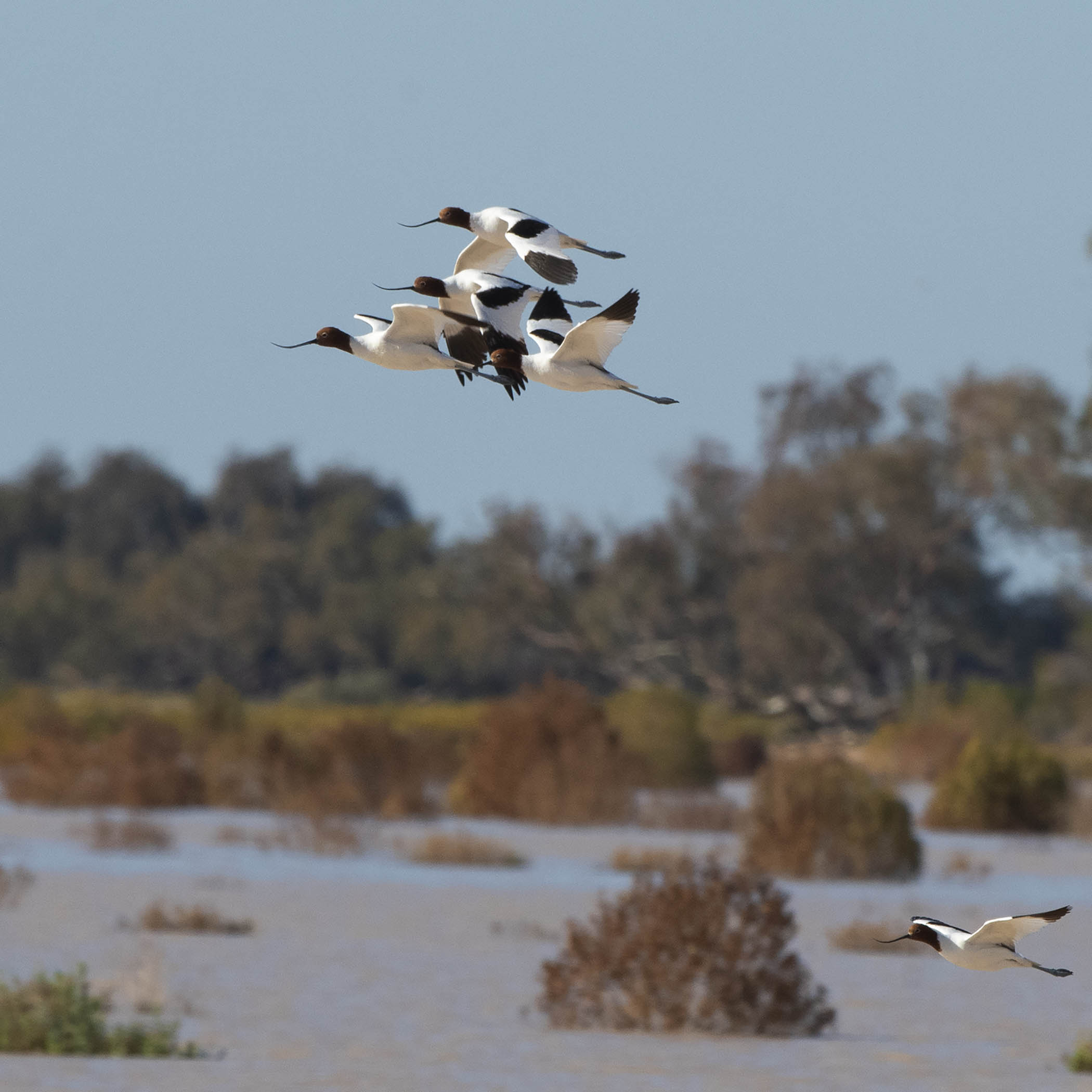 Photo Information
Photo InformationMultiple red-necked Avocet birds in flight at Peery Lake
Peery Lake
Paroo-Darling National Park
Dirk Hovorka (2020)
Gaze out over the lake and you’ll spy patches of lush green islands springing up, small hills rising from the lakebed like mini volcanoes.
These strange formations, which look like they would be more at home on a tropical island than in the desert, are called mound springs and are one of the rarest landforms on our continent.
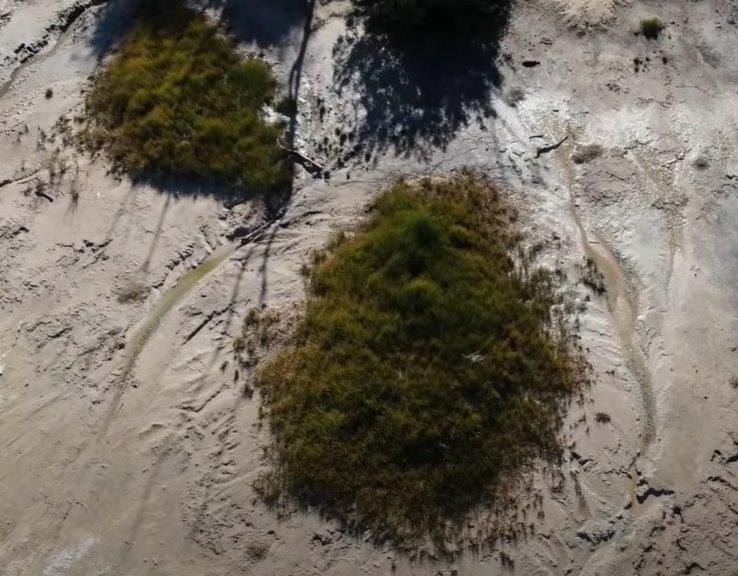 Photo Information
Photo InformationFrom above the mound springs just look like furry pom poms, but they’re pretty incredible.
Peery Lake
Paroo-Darling National Park
ABC Broken Hill: Aimee Volskofsky (2020)
The mounds are formed when water from the Great Artesian Basin (the ancient freshwater supply underneath Peery Lake) comes up to the surface through fault lines in rocks. This water flowing up to the surface is estimated to be up to 30,000 years old!?
Sediments and salts are left behind from the springs as the water evaporates, creating mounds which can sprout trees and bushes.
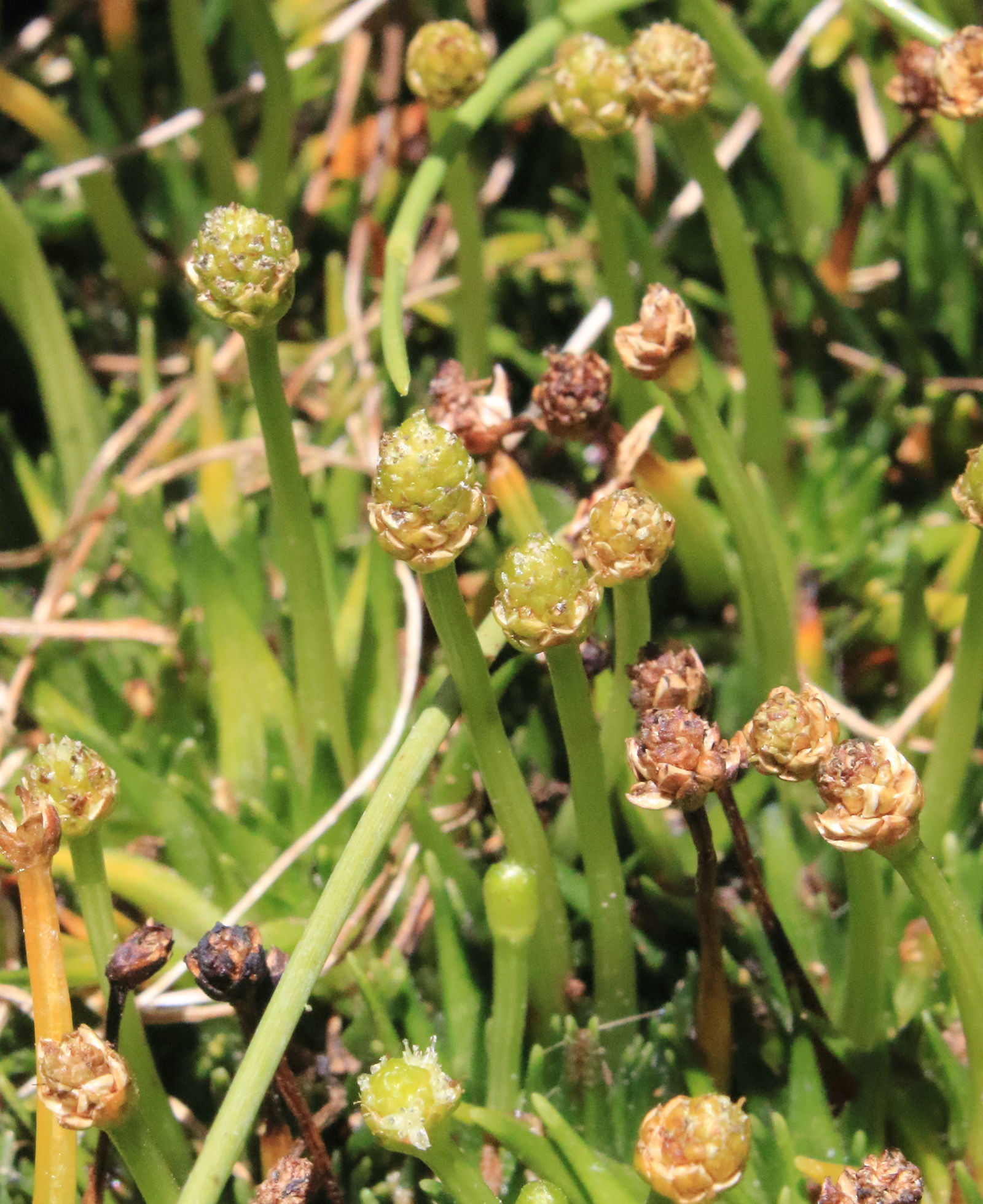 Photo Information
Photo InformationSalt Pipewort (Eriocaulon carsonii)
Gavin Phillips / DPE
These oases in the desert are home to some rare native plant and animal species which are only found here, including the endangered salt pipewort – a small tufted herb with flowering stems which lives exclusively on the mound springs.
Did you know: Peery Lake mound springs are the largest active springs on a lakebed in NSW.
-
Dreamtime stories
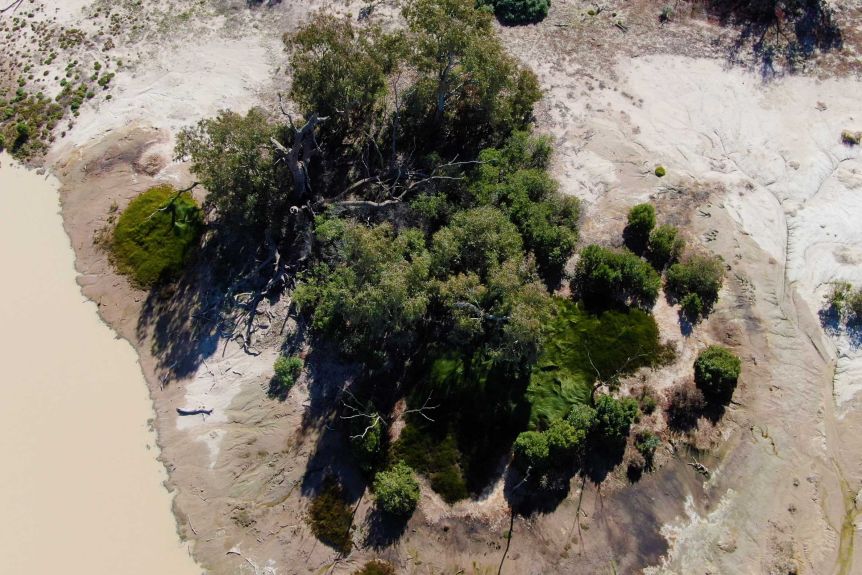 Photo Information
Photo InformationPeery Lake mound springs
Peery Lake
Paroo-Darling National Park
ABC Broken Hill: Aimee Volkofsky
The Peery Lake mound springs have great cultural and spiritual significance to the Traditional Owners of this land, the Barkindji Aboriginal people.
As well as being a vital life source offering reliable water in the dry outback, the mound springs are important in Barkindji dreaming stories about Ngatji, the rainbow serpent. Ngatji lives in the rivers, travels underground from waterhole to waterhole and comes up to the land through the mound springs.
There is a number of Aboriginal rock art sites in the surrounding hills, and rock engraving sites and artefacts can be found around the edges of the lake.
-
Conservation champion
 Photo Information
Photo InformationPink eared ducks in flight (Malacorhynchus membranaceus)
Peery Lake
Paroo-Darling National Park
John Spencer/DPIE
Peery Lake is listed as a Ramsar site under the Convention of Wetlands of International Importance.
That fancy title means it has been recognised on a global scale as a rare and unique wetland which contributes in a massive way to global biological diversity. Being a habitat where so many threatened species and ecological communities can thrive, it needs to be protected.
A lake rising up out of nowhere, a bounty of birds, lush otherworldly plants to see and rich stories to understand make this place a special one to visit on that outback NSW trip you’ve always wanted to do.
Safety is of high priority in outback areas. In summer, temperatures can reach up to 50°C in some places. Food, water and fuel supplies can be scarce. Before you head off, check for alerts and road closures and use our contacts to stay safe in the outback.
______________
Header video credit: ABC Australia. Watch the full version:

